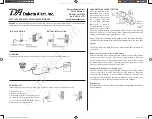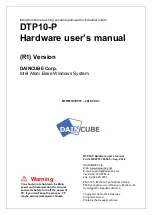
6105
6105
6105
6105 Belt
Belt
Belt
Belt Feeder
Feeder
Feeder
Feeder integrator
integrator
integrator
integrator
---
---
---
--- User
User
User
User’’’’s
s
s
s Guide
Guide
Guide
Guide ---
---
---
---
5
To calculate the exact number of revolutions, the instrument counts the pulses delivered by the speed
sensor (one pulse represents a specific belt length); when the required number of pulses is reached,
the instrument ends the calibration test, and compares the actual totalized value to the theoretical one
(0 for zero calibration), and calculates the calibration constant.
The calibration constant is a calculated value that can be factored based on an actual material test.
-
Electronic Calibration (R-Cal)
Allows the operator to perform the calibration without the need of applying test weights or test chain
on the weighbridge. The electronic calibration checks all the circuitry including the load cell, and is
performed by unbalancing the load cell bridge using a precision resistor. The calibration constant is
calculated on the basis of the load cell and the scale data.
-
Test Weight Calibration
Requires the positioning of test weights on the weighbridge
-
Chain Calibration
Requires the application of calibrated chains on the belt. This method is the nearest to actual
operating conditions.
-
Material Calibration
Is performed by running a known quantity of material on the scale and weighing that quantity on a
static scale of known accuracy.
4.
Zero Tracking (AZT)
Under a preset minimum flowrate when enabled, the instrument makes subsequent automatic zero
calibrations with the following sequence:
-
performs automatic zero for one test duration.
-
continuously repeats above zero calibration as long as feed rate remains below AZT preset value.
5.
Current Output Signals
An optional current output/analog input board is available. Each current output may be programmed via
the keyboard to deliver one of the following signals:
-
flowrate
-
belt loading
-
belt speed
-
control signal
1.3.2
1.3.2
1.3.2
1.3.2
Monitoring
Monitoring
Monitoring
Monitoring Function
Function
Function
Function
Saimo 6105 integrator is equipped with an indication system. Indication can be in the form of:
-
status indications
-
process alarms
-
programming errors
-
equipment failures
The integrator includes internal diagnostics that will generate alarms in case of hardware failures or
programming errors. The following process alarms are also provided:
·
Belt slip (two speed sensors recommended)
·
Alarms for high and low flowrate, speed and weight
These alarms are visible on the display and can be acknowledged and reset through keyboard, digital











































